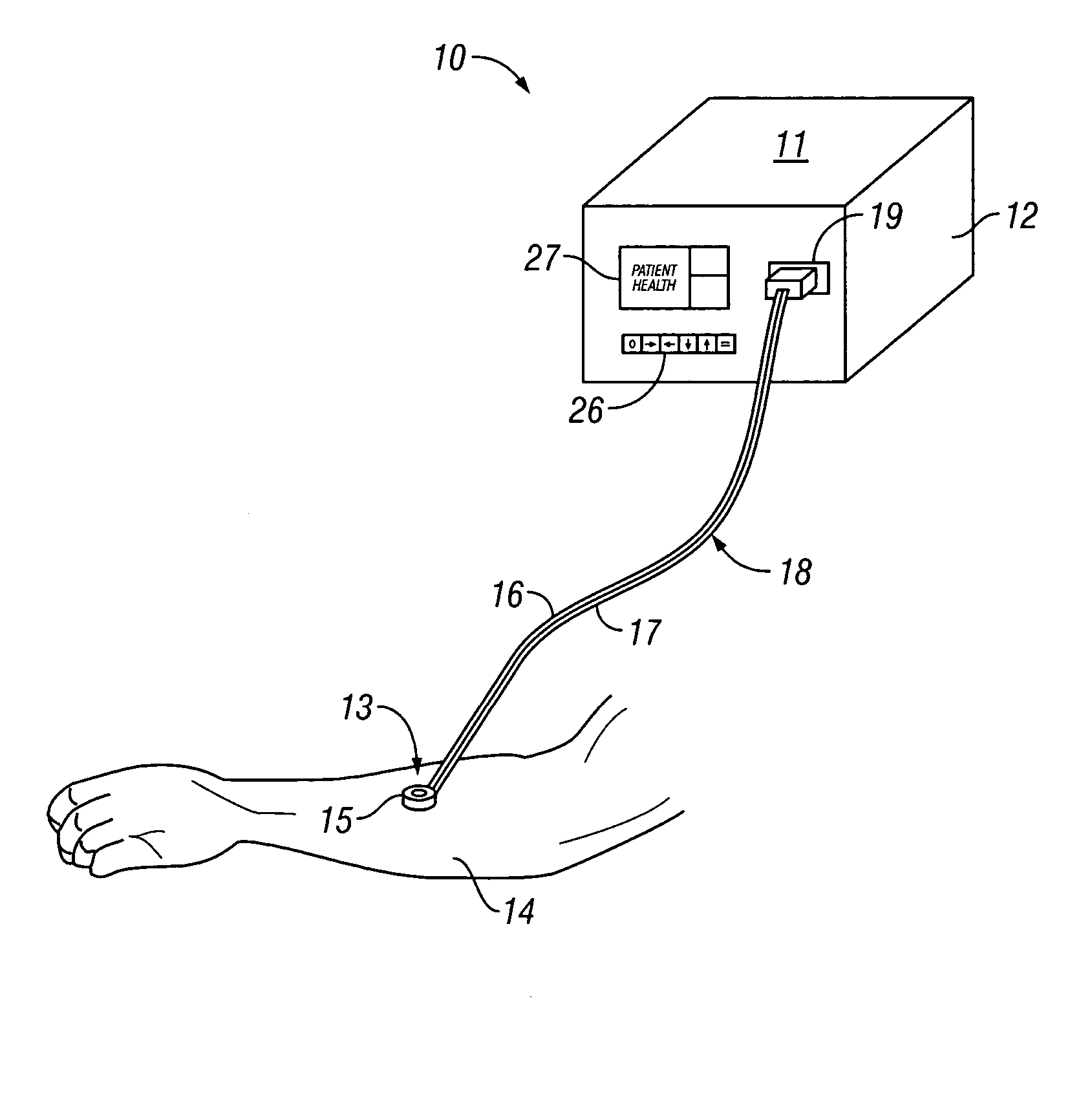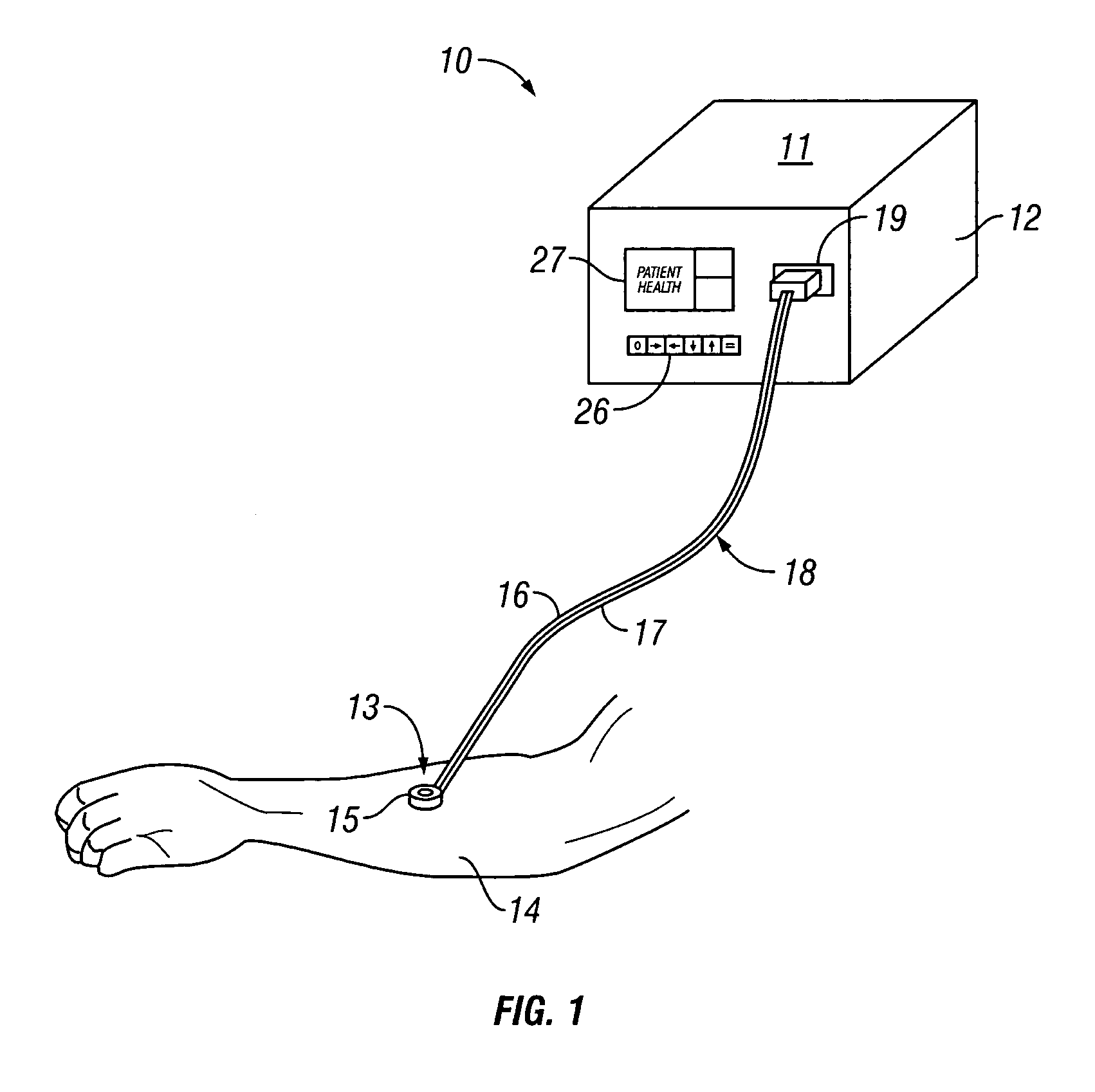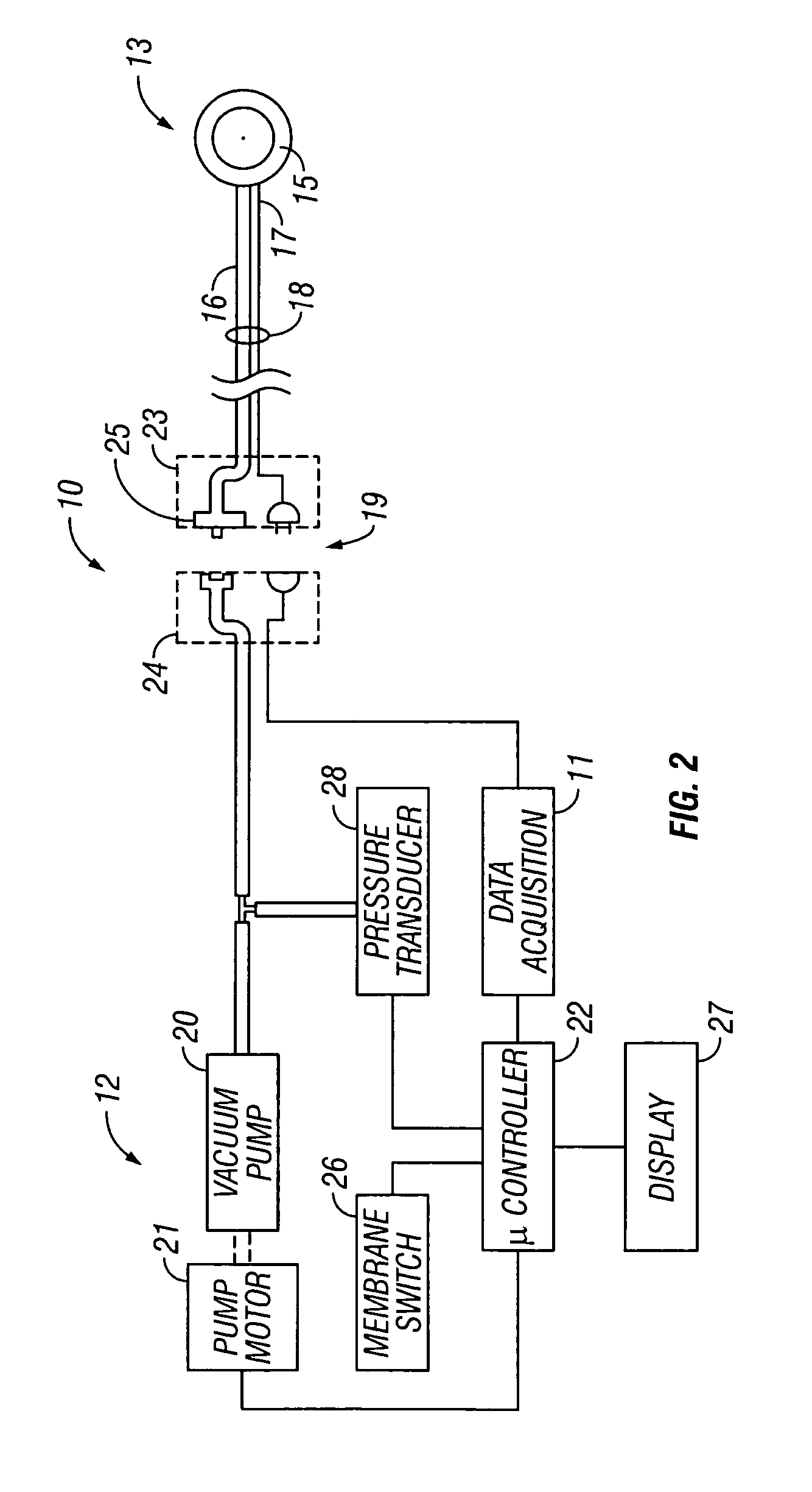System for combined transcutaneous blood gas monitoring and negative pressure wound treatment
a technology of blood gas monitoring and wound treatment, applied in the field of monitoring of blood gas, can solve the problems of increased risk of tissue injury, erythema, blisters, burns and skin tears, inappropriate treatment of patients, etc., and achieve the effect of reducing or eliminating contamination risk
- Summary
- Abstract
- Description
- Claims
- Application Information
AI Technical Summary
Benefits of technology
Problems solved by technology
Method used
Image
Examples
Embodiment Construction
[0023]Although those of ordinary skill in the art will readily recognize many alternative embodiments, especially in light of the illustrations provided herein, this detailed description is exemplary of the preferred embodiment of the present invention, the scope of which is limited only by the claims that may be drawn hereto.
[0024]Referring now to FIG. 1, the preferred embodiment of the transcutaneous blood gas monitoring system 10 of the present invention is shown to generally comprise a blood gas data acquisition device 11, a vacuum source 12 and a blood gas transducer unit 13. As shown in FIG. 1, the blood gas transducer unit 13 is adapted for application to a patient's skin 14. In alternative embodiments, not shown, the blood gas transducer may be applied within a wound bed 30 or disposed within a screen 32 placed within the wound bed 30. As will be better understood further herein, the blood gas transducer unit 13 is also adapted for administration of a local vacuum at the are...
PUM
 Login to View More
Login to View More Abstract
Description
Claims
Application Information
 Login to View More
Login to View More - R&D
- Intellectual Property
- Life Sciences
- Materials
- Tech Scout
- Unparalleled Data Quality
- Higher Quality Content
- 60% Fewer Hallucinations
Browse by: Latest US Patents, China's latest patents, Technical Efficacy Thesaurus, Application Domain, Technology Topic, Popular Technical Reports.
© 2025 PatSnap. All rights reserved.Legal|Privacy policy|Modern Slavery Act Transparency Statement|Sitemap|About US| Contact US: help@patsnap.com



